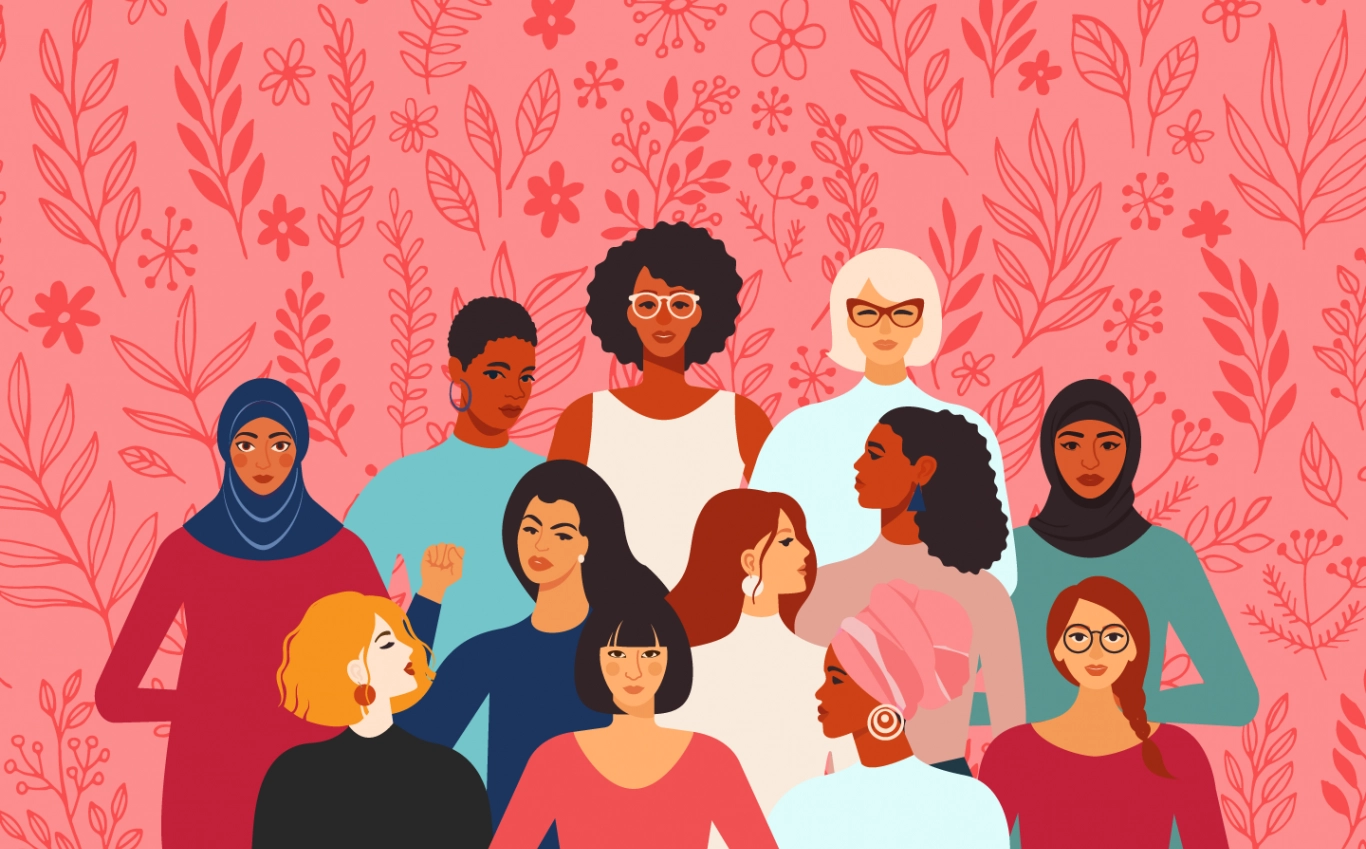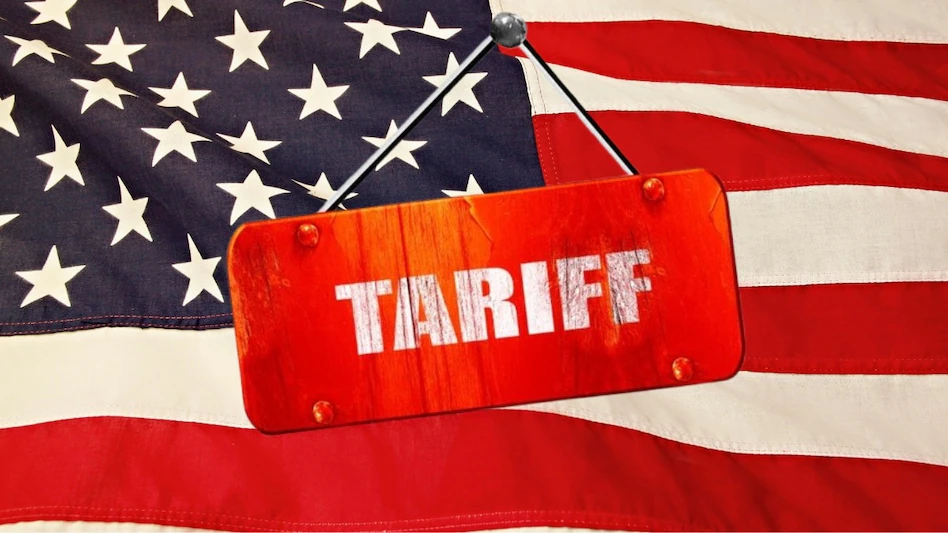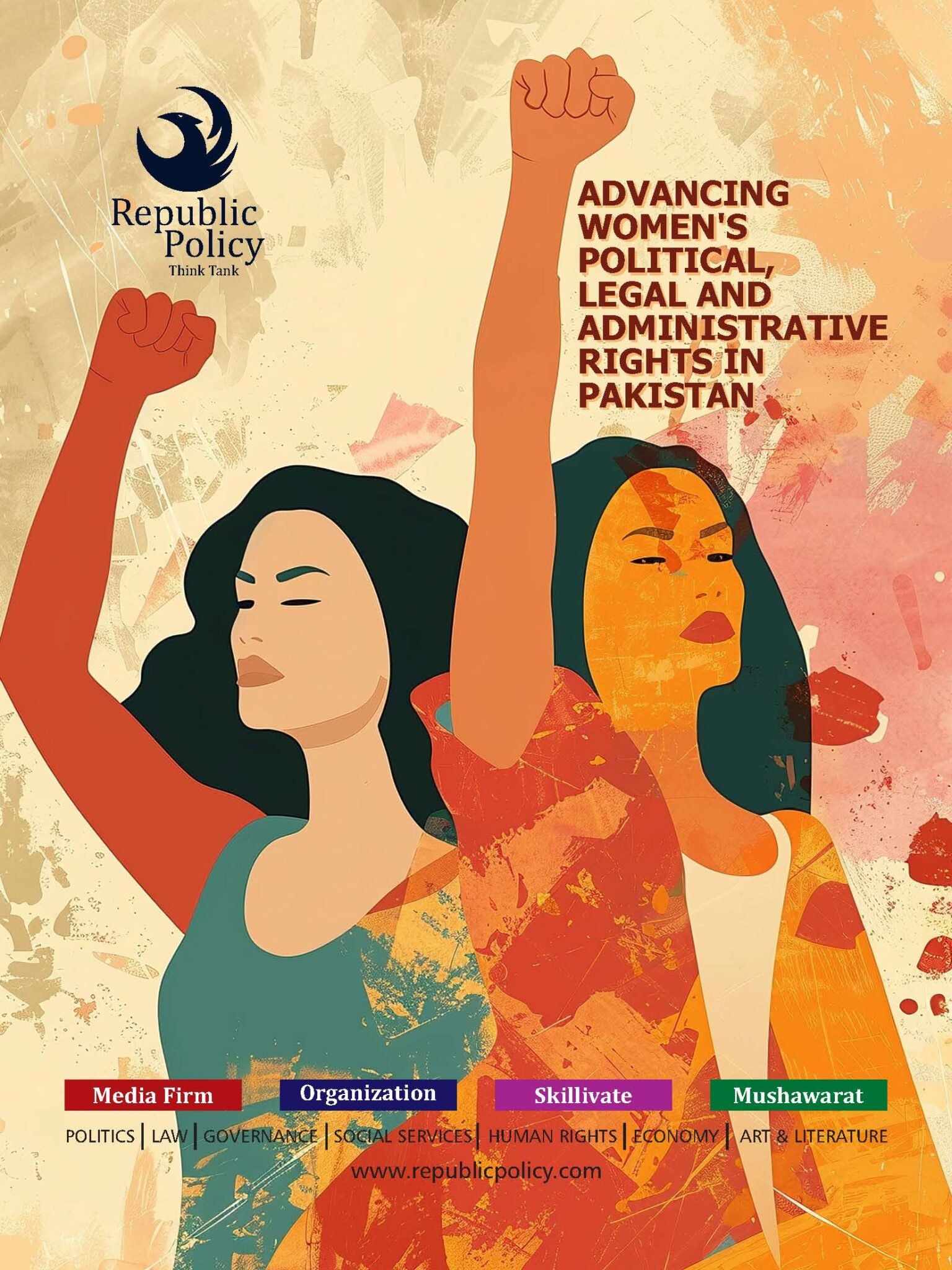Saqlain Raza
Women Empowerment Women-ism in the form of feminism is acting as a New Normal. Their consistent advocacy on the mantra of gender equality and equity is the buzzword. Meanwhile, their utility as a progressive franchise culturally, politically, & economically is the most prominent thing under their progressive dynamics. A movement that initially started for their suffrage rights has universalized itself and legitimized itself as a vibrant advocate of women’s empowerment cause and agenda. Internationally, feminism is a part of the mainstream narrative, but it is now a mainstream part of international governance related to women’s empowerment agendas. From attaining universal suffrage to the slogan of universal equality, equity is a prominent advocacy platform. From intellectual activism to practical manifestation, it is the most prominent agenda now. It not only raised women’s political, cultural, and economic empowerment but put an end to all kinds of exploitation politically, culturally, and economically on equality and equity foundations.
Post-Colonial Pakistan & women empowerment cause
Pakistan and its political culture related to women’s empowerment is a very tight-trope walk. The post-colonial statecraft of Pakistan largely remained on the foundations of patriarchy, apartheid, and masculine-led culture. Under the inherited baggage of colonialism, most matters of state wheeling and dealing remained on that inherited baggage. Politically, Pakistan remained masculine-dominated, culturally on apartheid fundamentalism of ideological constraints, and economically on class imbalance, inter-sectional oppression, and class patronage. Political culture, based Upon elite-led Monopoly women empowerment cause remained a suppressed entity. Under the burden of the feudal cum dynast cum model, the political patriarchy and hierarchy being a male-dominated society blurred the agenda of women’s empowerment up to much extent. Culturally, on the foundations of indigenous radical and fundamental mores and norms, it acted as an ideological constraint for the practical manifestation of progressive agendas like women’s empowerment. Economically, divided among class imbalance, inter-sectional oppression, and class patronage, it remained divorced from the reality of women empowerment as a general practice.
Women empowerment as a Western Franchise & North-South divide
It is a common phrase that women’s empowerment is basically a Western intellectual franchise. It is true that an intellectual movement initially started by demanding their suffrage Rights. In its first wave, it got universal suffrage and footprints of ideological activism. Its second wave remained about economic equality, equity, and economic inclusiveness. Their second wave gained the grounds of financial inclusiveness and economic due share on an equality equity basis. Third, the wave legitimized and universalized all their aspects and prospects and the democratization of gender and sex. Above all, from their intellectual movement to their practical manifestation in the form of three waves, one thing remained most prominent: west vs. rest, which showed significant divergence over the cause and implementation of women’s empowerment agendas. West utilized it and manifested it as their intellectual product. However, the rest remained culturally protectionist and viewed it as an ideological outsider. They tended and induced their radical indigenous model of their cultural mores and norms and remained reluctant to cultural modernization. Under this significant divergence, Pakistan remained a Major player in labeling the women empowerment cause as an outsider ideology and induced its radical fundamental model for its cultural utility and protectionist sakes.
Ideological Constraints, Women Empowerment & Pakistan
For all time, religiosity remained a buzzword and the talk of town for Pakistan. The post-Westphalian nation-states widely operated on secularity, constitutionality, and plurality for implementing such progressive agendas. But, in the context of Pakistan, this notion of secularity, constitutionality, and plurality remained a ready-made concept in terms of the manifestation of such progressive agendas. Under the massive burden of ideology and theology socially, it remained much suffocated from their activism to practical manifestation. Three to four progressive organizations just established in Pakistan about women’s empowerment cause by fighting the massive burden of patriarchy, apartheid, and radical fundamental dogma. Initially, the All Pakistan Women Action Forum (APWA ) fought against the Zia model of “Hadood laws.” Later, the women’s action forums and Aurat March foundations progressively advocated the women’s empowerment agenda and did progressive activism about their manifestation.
Constitutional provisions, Women Empowerment and Pakistan
Pakistan is a parliamentary democracy that guarantees all fundamental rights to its citizens in its constitution. However, Article 25 grants everyone equality and demonstrates no discrimination based on particular sex and gender. Articles 25 (3) and 26( 2) mainly determine women’s and children’s equality and their empowerment cause. The Protection against Harassment of Women at the Workplace Act 2010 demonstrates women’s protection. Article 11 of the constitution talks about the guarantee of liberty and prohibits child girl’s domestic bonded labor. But did all this previously work for the agenda of women’s empowerment.? The answer seems ambiguous. Due to the politically impeded inertia of masculine culture, it did not make the complete empowerment of women happen.
More than 12.2 million girls and children are out of school in all of Pakistan. Approximately 264000 child girls in Pakistan are under domestic child labor. As reported by the HRCP in 2020, over 90% of Pakistani women have faced domestic violence in their lifetime. The maternal mortality ratio in Pakistan is 186 deaths per 100,000 live births. The ratio is nearly 26% higher in rural areas than urban areas. Only 17% percent of women’s quota in Pakistan electoral politics has not solved the whole problem and achieved universal gender and women empowerment in Pakistan.
Women Empowerment Way Forward for Pakistan
Where there is a will, there is a way. First, it requires the will and then pragmatic approaches of rethinking and re-imagining all Spectra about women empowerment in the context of Pakistan. To implement honest and pragmatic women empowerment agendas in Pakistan, there is a need to make political culture a culture of inclusiveness and gender sustainability. The political culture led by masculine-dominated franchises and based upon popular culture must be re-imagined in all domains. Political empowerment based on equality in all domains can yield a first step toward women’s empowerment in Pakistan. Culturally, there is a need for an apparent renaissance and reformation in this ideologically implemented model based upon fundamental radical rife. To manifest progressive agendas like women empowerment in Pakistan, there is a need to re-imagine all & sundry, which are based on apartheid fissures. For practical manifestation, there is a need for a pragmatic reformation of all domains of women’s empowerment. There is a need to eliminate the ideological constraints of indigenous fundamental mores and norms and dismantle notions like the protectionism of culture. Socially, progressive thinking is needed in all intellectual circles.
The ideological, moral policing, which is heavily deployed from the state’s formal and informal cultures, needs to be eliminated. The formal social circle must be upon the foundations of patriarchy-free culture and apartheid-free social domains. The informal social circle must be on the foundations of elimination of masculine-led peer pressure and hostage towards women empowerment. Economically, there needs to be a balanced privilege and stratification for all. The class imbalance that created inter-sectional haste and economic exploitation must be reformed and re-imagined first. The elimination of class patriarchy and sustainability of financial development on equal grounds lead to the inclusiveness of women’s empowerment. More and more privilege in terms of equality, in terms of education, in terms of health care, in terms of skilled learning can solve the puzzle of apartheid in economics inclusiveness, education quality, in terms of health care, and skilled labor in terms of qualitative education, respectively. Constitutionally, there needs to be a precise mechanism of fundamental rights assurance and guaranteeing equality and women empowerment.
Regarding education, Article 25 ( A) must ensure Access to education for all 12.2 million girls ‘ children who are out of school. In terms of health care, the state must ensure maternal health awareness for all women, especially in rural areas, for their developmental causes. There should be a particular health awareness about maternity. In the context of equality and dismantling racial discrimination, articles 25 ( 3 ) and 26 (2) must ensure equality and equity cause. Regarding skilled labor, the state must ensure quality learning and integration of women into special skill training centers like in IT instead of domestic labor. In terms of Protection against Harassment of Women in the Workplace, the 2010 act must ensure women’s implementation and safety for women’s empowerment. The writer is a medical graduate but a consistent writer of public policy, gender, and public health who previously wrote for the Planning Commission of Pakistan, NACTA, and the Nation.
Please, subscribe to the YouTube channel of republicpolicy.com

















